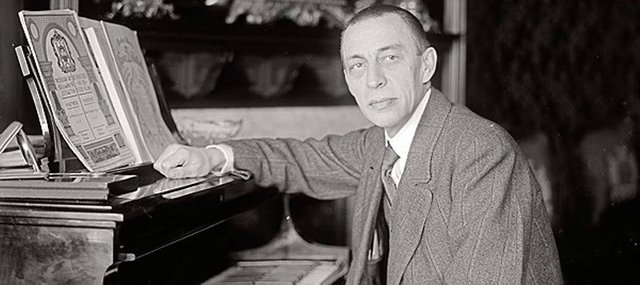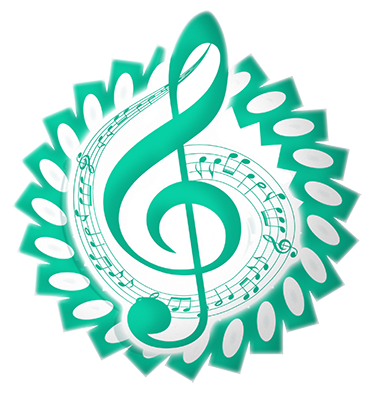The "Sonata for Cello and Piano Op.19" (1901) by Sergei Vasilievich Rachmaninoff (1873 - 1943).

1
Just one thing about Rach! Wonderful! He was one of the most influential pianists of the first half of sec. XX. His compositional work, although often criticized in some literatures, as the [wikipedia] (https://pt.wikipedia.org/wiki/Sergei_Rachmaninoff) page dedicated to the maestro says, is being increasingly appreciated and played in the concert.
This month the choir of the São Paulo State Symphony Orchestra presented "Vesperas Op37", Passadena Symphony and Pops, his "Rhapsody on Paganini themes", San Francisco Symphny, and the [National Symphony Orchestra](http://www.kennedy-center.org/calendar / event / NTCSD) from Washington (this on November 15 of this year) his "Piano Concerto n3".
But today I want to talk about a work that has caught me in the last few months. The "Sonata for Cello and Piano Op.19"
A substantial work with a little more than thirty minutes in duration, in four movements.
- Lento - Allegro moderato (G minor)
- Allegro scherzando (C minor)
- Andante (E flat major)
- Allegro mosso (G major)
It is his most famous chamber music, full of colors in his phrasing, harmonically rich, and of enormous creativity, its a piece in which all the mysticism and spirituality of his art can be lived intensely. Personally a love-life hymn.
Officially it was finished in November of 1901, released on December 2 of the same year with the cellist Anatoly Brandukov (1858 - 1930), to whom dedicated the work. Published on December 12 with some changes. The recording is from 2006, with Natalia Gutman (1942) to the cello, and Elisso Virsaladze (1942) to the piano.
The first movement is the longest of the four, it begins with a slow, introspective introduction that plays a key role in the listening process, sharpen the listener's sensitivity. The tempo increases, and the themes present themselves in passionate, beautiful, and mysterious melodies. The development is tempestuous, full of modulations, tensions, and conflicts, which are resolved in the dialogue of repeated notes between the two instruments. After this moment with the first theme the reprise begins, between the tempestuous climate of development and the mysticism of the exhibition. The piece ends with the typical Rachmaninovian style. The pulsation accelerates as thematic pieces appear in a race to the end, and the piano crowns the coda with three resolute chords.
The second movement, "Allegro scherzando" begins at the piano with a theme reminiscent of the fastest and sinister passages of Rhapsody on a Paganini Theme. The cello presents a rhythmic idea in the opening moments. In "Un poco meno mosso" the energy of the work is transformed, and the cello enters one of the most romantic and beautiful themes of the whole sonata. The affections of this whole movement alternate between the sinister and the divine; the harshness and the sweetness. An inheritance of baroque music with the theory of affections. While in the past each suite (music collection) represented a particular affection, here we can feel the change of these sensations in a single work. Graces to the development of form, and the creativity of great masters, we had the gift of having between us.
The third movement is of deep and intimate beauty. It is as if the piano made an initial declaration of love, followed by an equally passionate declaration of the cello, followed by a dialogue made like the palm of two people who seek each other and touch each other. The cello continues to make its affirmations, the piano gets excited in short notes and takes the word. The whole song follows in a passionate and intimate dialogue, in which the dynamics and pulsation expands and contracts like the beating of two hearts into one.
The fourth and last movement "Allegro mosso" begins in a lively, light and happy way, at first without that profound digital impression of the composer. The joy shown festively soon turns into an inner joy. This theme is with the identity and beauty of the themes of this sonata. Then "Rach" skillfully manipulates the interaction between the two themes, with the same deep richness of sensations that it is able to awaken. The first theme returns in the recapitulation of ideas, as well as the second, this in a new tonality, another color, another smell. The coda after another brief recap of the first theme is introspective, for a strong and agile ending!
The fourth and last movement "Allegro mosso" begins in a lively, light and happily way, at first without that profound digital impression of the composer. The joy shown festively soon turns into an inner joy. This theme with the identity and beauty of the themes of this sonata. Then "Rach" ably manipulates the interaction between the two themes, with the same deep richness of sensations that he is able to awaken. The first theme returns in the recapitulation of ideas, as well as the second, this in a new tonality, another color, another smell. The coda after another brief recap of the first theme is introspective, for a strong and agile ending!
I hope you travel and enjoy it as much as I appreciate= D
A great hug
Guilherme Faquetti
November 06, 2018

The classical music community at #classical-music and Discord. Follow our community accounts @classical-music and @classical-radio. Follow our curation trail (classical-radio) at SteemAuto Community Logo by ivan.atman
participe do ptgram | conheça nossa comunidade
Referencias
https://www.hyperion-records.co.uk/tw.asp?w=W3651
https://www.allmusic.com/composition/sonata-for-cello-piano-in-g-minor-op-19-mc0002397933
https://imslp.org/wiki/Cello_Sonata,Op.19(Rachmaninoff,Sergei)
https://pt.wikipedia.org/wiki/Sergei_Rachmaninoff
https://en.wikipedia.org/wiki/Cello_Sonata(Rachmaninoff)
https://www.bbc.co.uk/music/works/f2ad7b77-1f4f-411f-aadd-7c7cd5b17c0c
https://www.sfsymphony.org/Buy-Tickets/2017-18/Trifonov-Plays-Rachmaninoff-with-the-SFS.aspx
http://www.kennedy-center.org/calendar/event/NTCSD
http://www.osesp.art.br/paginadinamica.aspx?pagina=MinhaSerieMarinAlsop
https://pasadenasymphony-pops.org/concert/rachmaninoff-rhapsody-on-a-theme-of-paganini-2/
https://en.wikipedia.org/wiki/Anatoliy_Brandukov
Dear Artzonian, thanks for using the #ArtzOne hashtag. Your work is valuable to the @ArtzOne community. Quote of the week: Art, freedom and creativity will change society faster than politics. -Victor Pinchuk
Congratulations! This post has been upvoted from the communal account, @minnowsupport, by guifaquetti from the Minnow Support Project. It's a witness project run by aggroed, ausbitbank, teamsteem, someguy123, neoxian, followbtcnews, and netuoso. The goal is to help Steemit grow by supporting Minnows. Please find us at the Peace, Abundance, and Liberty Network (PALnet) Discord Channel. It's a completely public and open space to all members of the Steemit community who voluntarily choose to be there.
If you would like to delegate to the Minnow Support Project you can do so by clicking on the following links: 50SP, 100SP, 250SP, 500SP, 1000SP, 5000SP.
Be sure to leave at least 50SP undelegated on your account.
Your post has been supported and upvoted from the Classical Music community on Steemit as it appears to be of interest to our community.
If you enjoy our support of the #classical-music community, please consider a small upvote to help grow the support account!
You can find details about us below.

The classical music community at #classical-music and Discord.
Follow our community accounts @classical-music and @classical-radio.
Follow our curation trail (classical-radio) at SteemAuto or help us out with a delegation!